
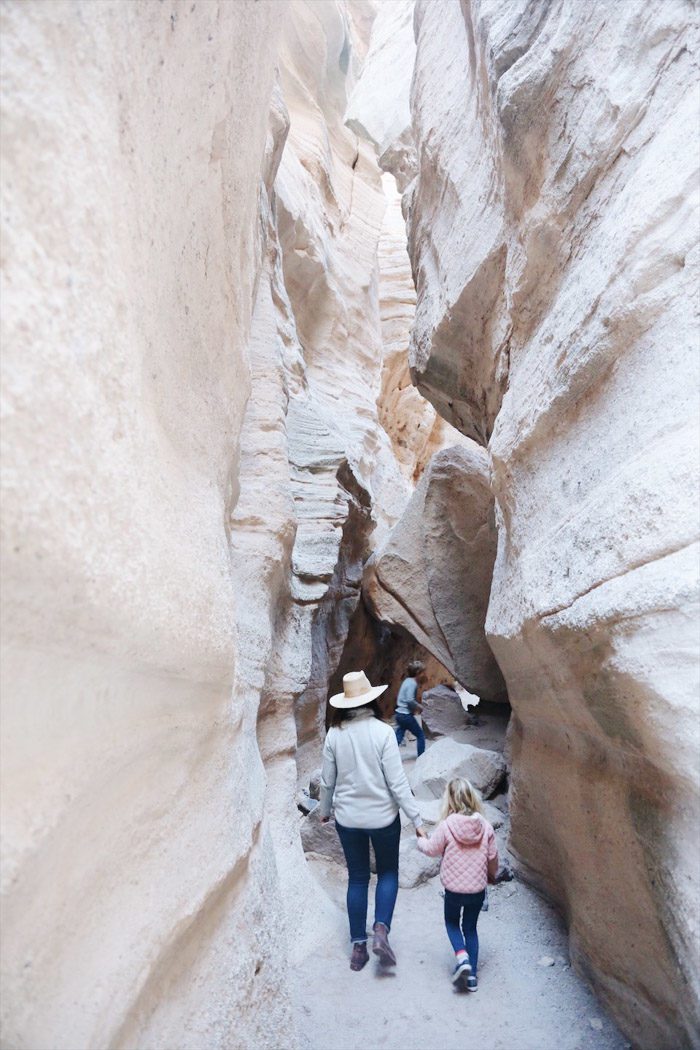


We took two main side trips from Santa Fe during our four-day-stay and, in an odd turn of events, they ended up taking place on the same day. But each was so dramatically beautiful—and led to my taking so many photos—that I wanted to share details about visiting Kasha-Katuwe Tent Rocks and Ghost Ranch, outside of Abiquiú, separately.
As it turns out, Tent Rocks gets extremely crowded by mid-morning and when we’d tried to visit the previous day, the parking lot was full, and there was an estimated wait time of 90 minutes just to drive past the ranger station. We decided to turn around and head back to Santa Fe, vowing to set out earlier the following day.
So our morning began there, 40 miles southwest of Santa Fe near Cochiti, and ended 60 miles northwest near Abiquiú…
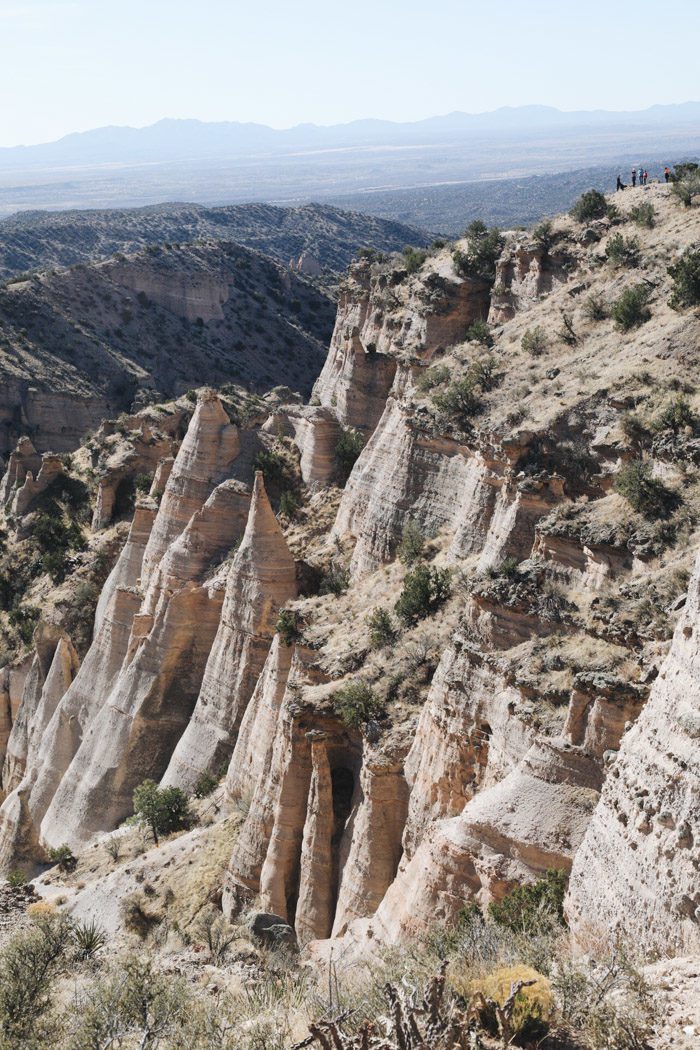
Driving into the monument, you’ll first pass a visitor’s center with souvenirs, snacks, and bathrooms in front of the giant Cochiti Dam across the Rio Grande. From there, the main road bends back to the southwest into Pueblo de Cochiti; you’ll see signs advertising beautiful pottery and handmade drums, if you plan to pay a visit.
If you’re not worried about the line to get into the monument, the visitor center makes a good place to stop before your hike, but you’ll also find picnic tables, shelters, and toilets at the monument by the parking lots. My suggestion would be to pack plenty of water and snacks ahead of time, and then plan to get to the entry-point between 8:00 and 9:00am. You can use the bathrooms there before setting out on the trail.
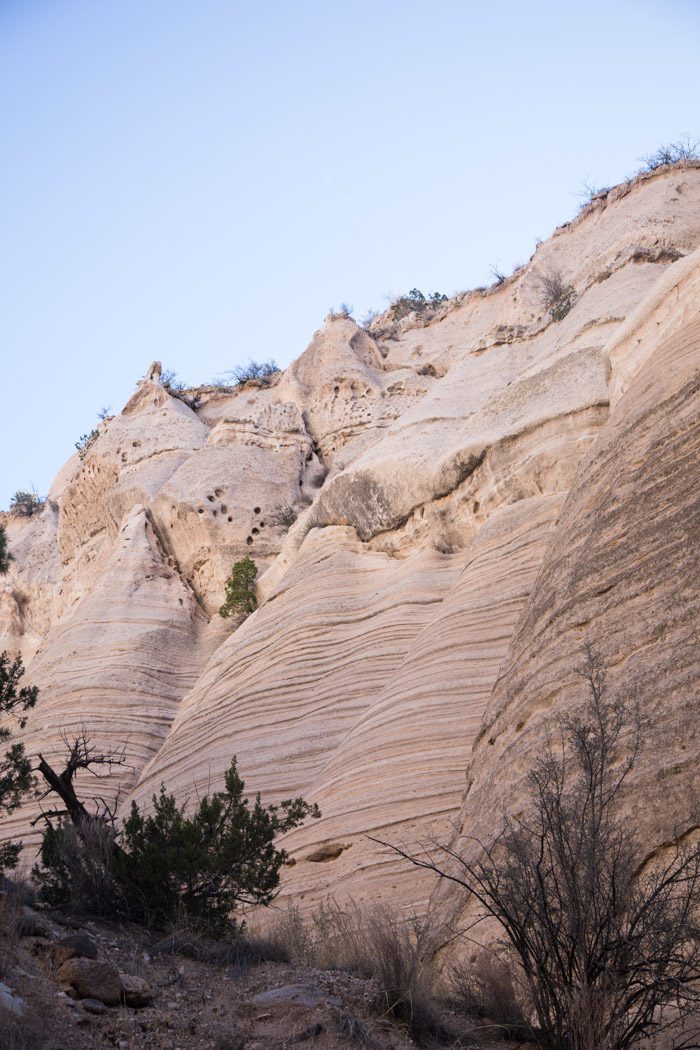
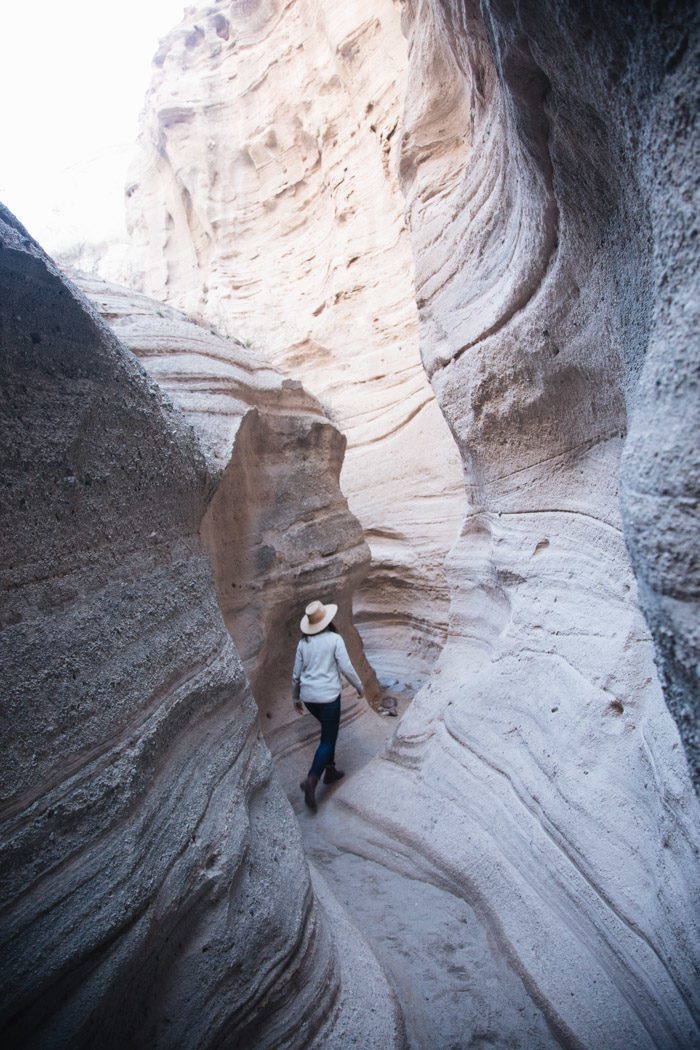
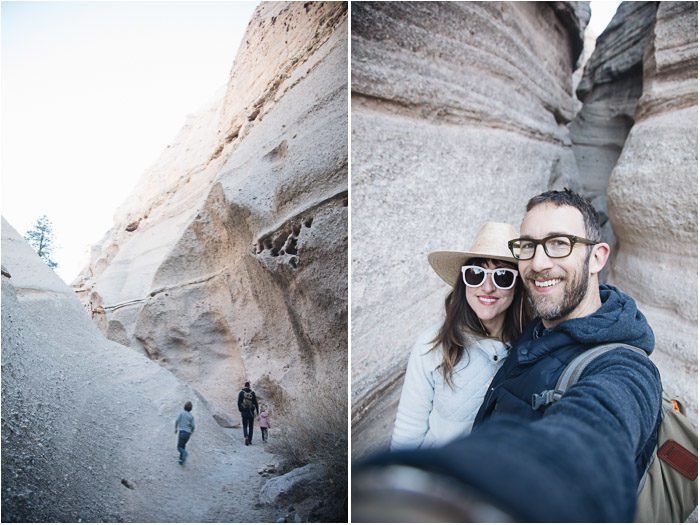
Kasha-Katuwe Tent Rocks National Monument is famous for its conic formations—hoodoos—composed of pumice, ash, and tuff deposits from volcanic eruptions 6–7 million years ago. The hike we planned to take through the hoodoos, the 1.5-mile Canyon trail, begins at their base, through a narrow “slot” canyon, and then climbs 630 feet to a mesa overlooking the Rio Grande Valley. There’s also the option of adding on a Cave Loop; and there’s a 1-mile wheel-chair accessible loop trail at the base, too.
The monument’s name comes from a Keresan phrase meaning “white cliffs,” but when you’re up close you’ll find their hue changes with the light, from grey to pink, tan to white, throughout the day.
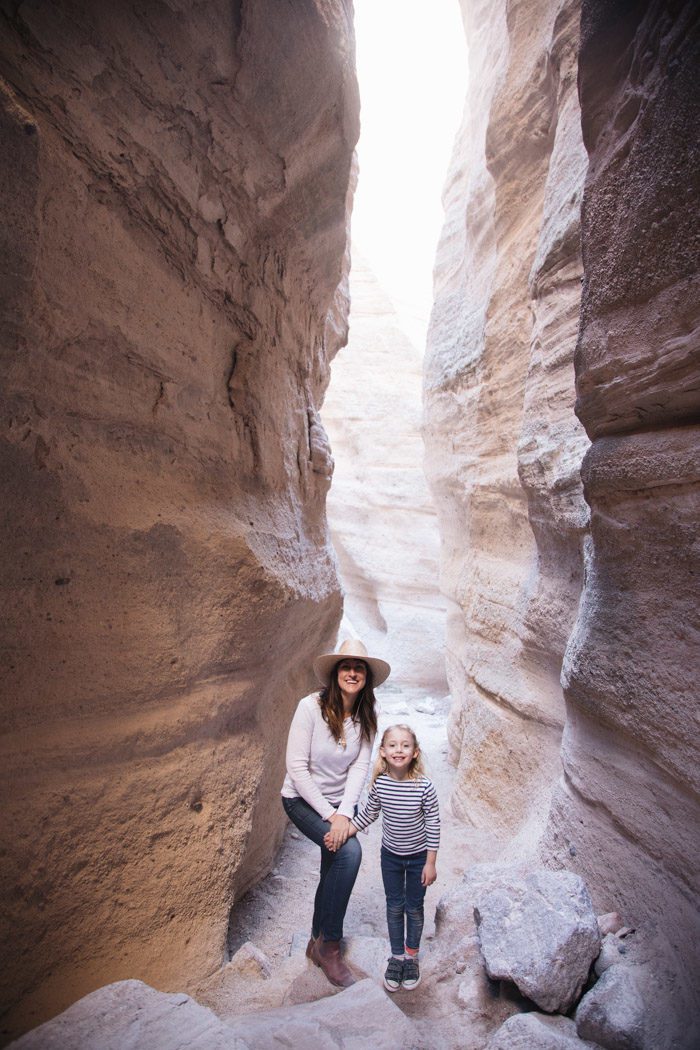
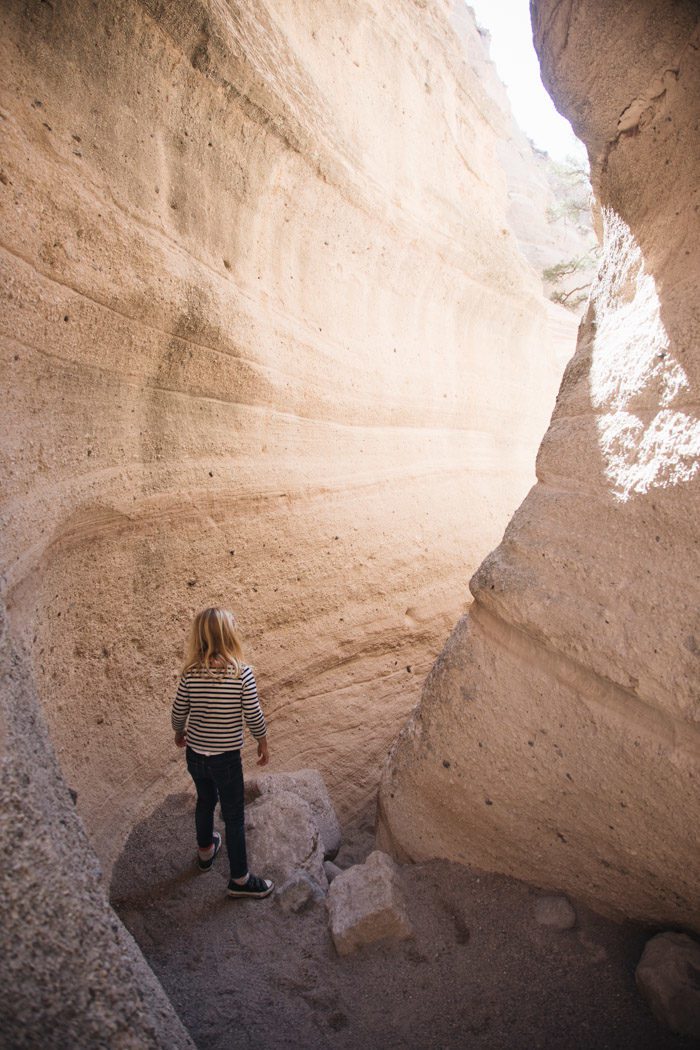
Weathering and erosion of layers of volcanic rock and ash created incredible canyons through the tent rocks. Hudson sped through them, practically bouncing off the walls as he went, and the hike passed quickly for all of us with its fascinating terrain.
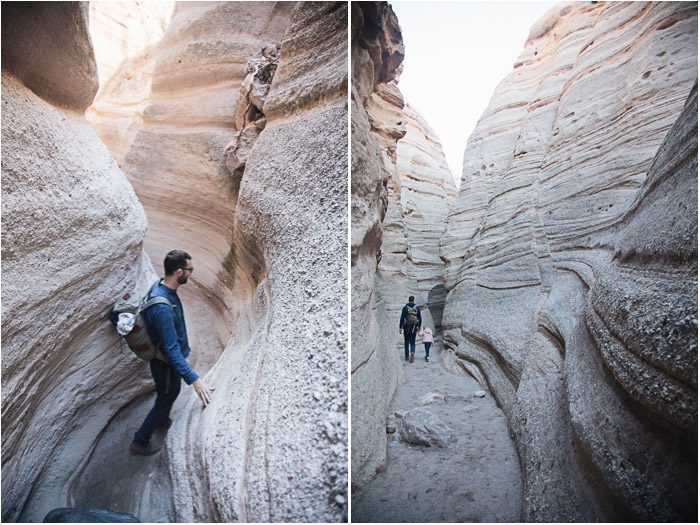
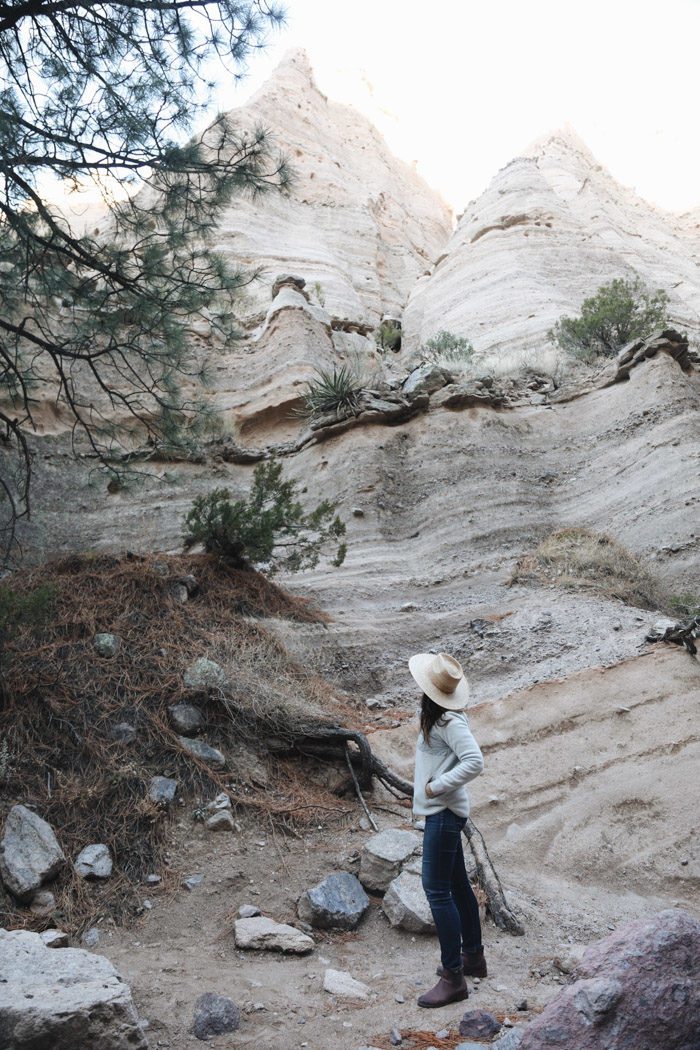
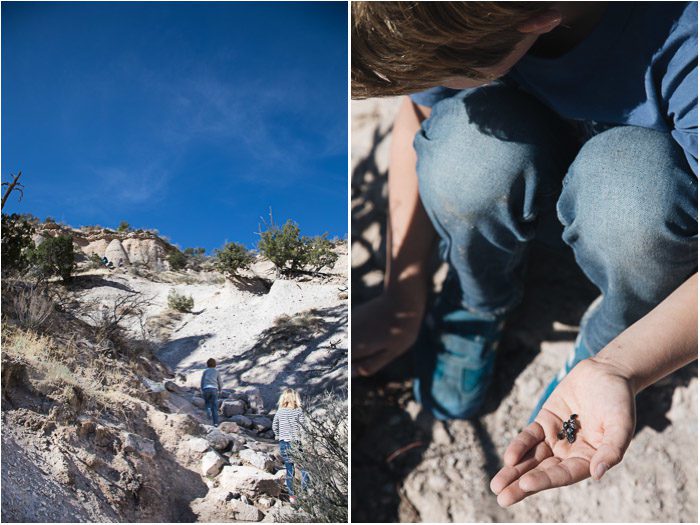
Eventually the trail starts to climb. We had a few “my legs are too tired”-whiny moments from a certain four-year-old, so Aron would occasionally hoist her onto his shoulders, but for the most part the two kids were total troopers. In fact, their bounding leaps up the stairs would occasionally give us pause as we looked back at the long way down—though the trail itself was generally pretty protected. But certainly, at the top, this is a place where you cannot look away from small children for a second. The drops off the sides are incredibly steep.
Hudson wasn’t as interested in those sweeping vistas, however, as he was in spotting pieces of obsidian—a translucent, grey volcanic glass known locally as Apache Tears—which can be found scattered over the washes and cliffs of the monument. Collecting samples is not allowed, so not to worry—these were left behind—but he often spotted them in little piles as evidence of someone’s previous gathering. Always trying to be in step with Hudson, Skyler started searching for them as well, and was as proud of the piece of blue plastic she found as any rock that resembled obsidian when she opened her palm.

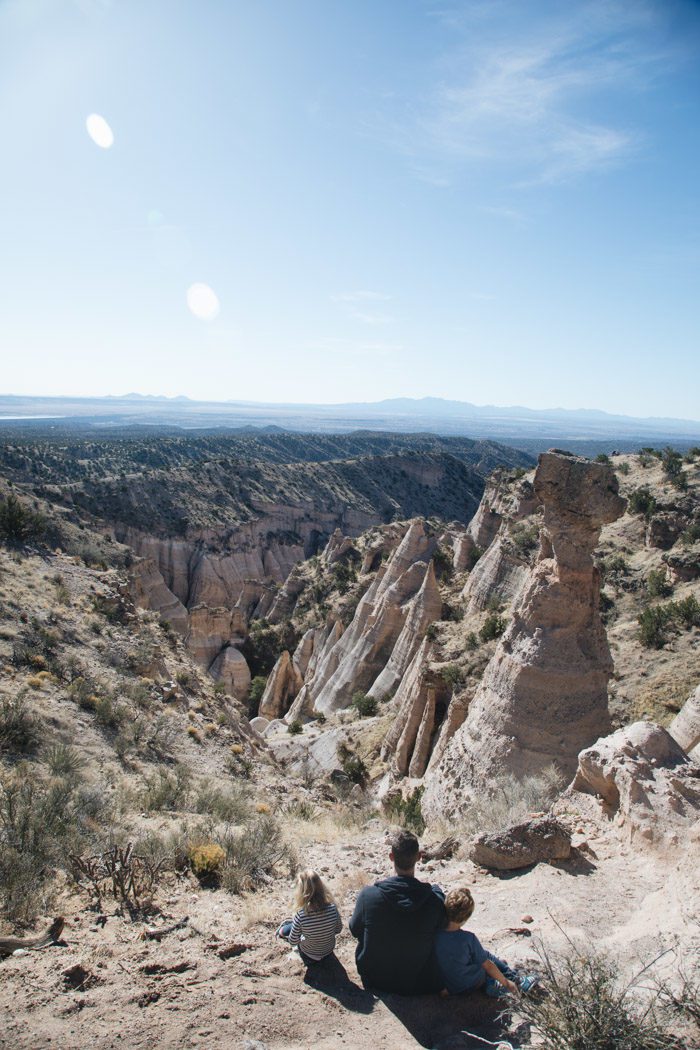
The views at the top were quite rewarding, as you could look back and be in awe of how far you’d come.
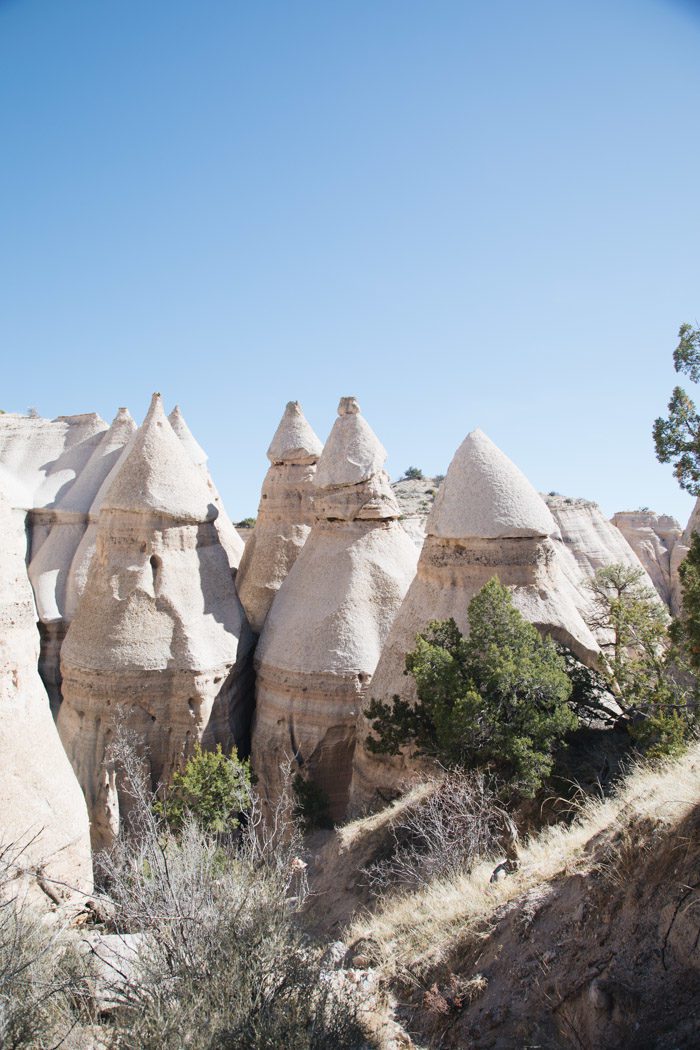
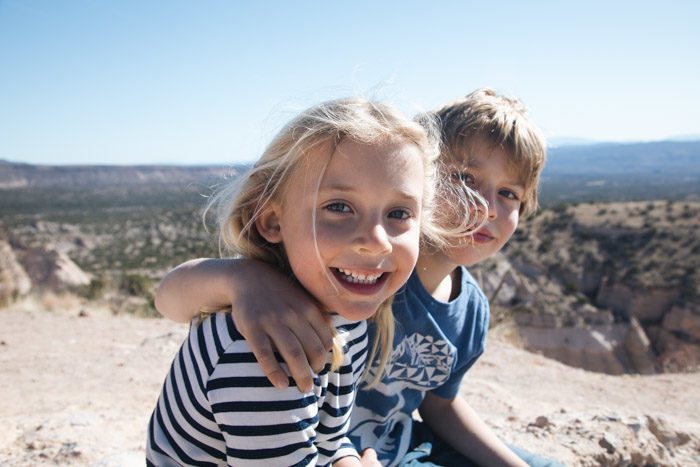
I think these two were rather proud of themselves—as we were of them.
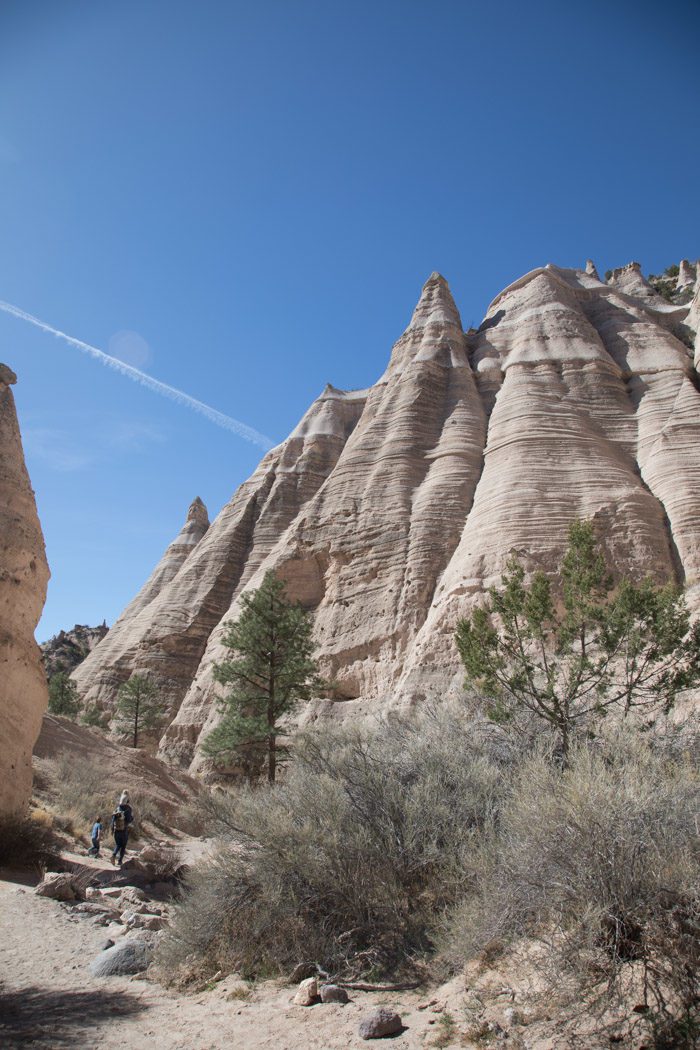
On our way back down the trail, we passed many more people on their way up—all of us doing a lot of pausing to pass simultaneously through the narrow slot canyons. It was definitely worth the early start to beat the crowds. We’d had the trail practically to ourselves on the way in.
All the better, this meant we were back down well before lunch and would be passing through Santa Fe just in time to grab some burgers and shakes at The Shake Foundation near the Railyard. I wrote more about this midday stop in my Santa Fe travelogue.
From there, we pressed on, heading north toward Abiquiú in Rio Arriba County, and into the 21,000-acre Ghost Ranch.
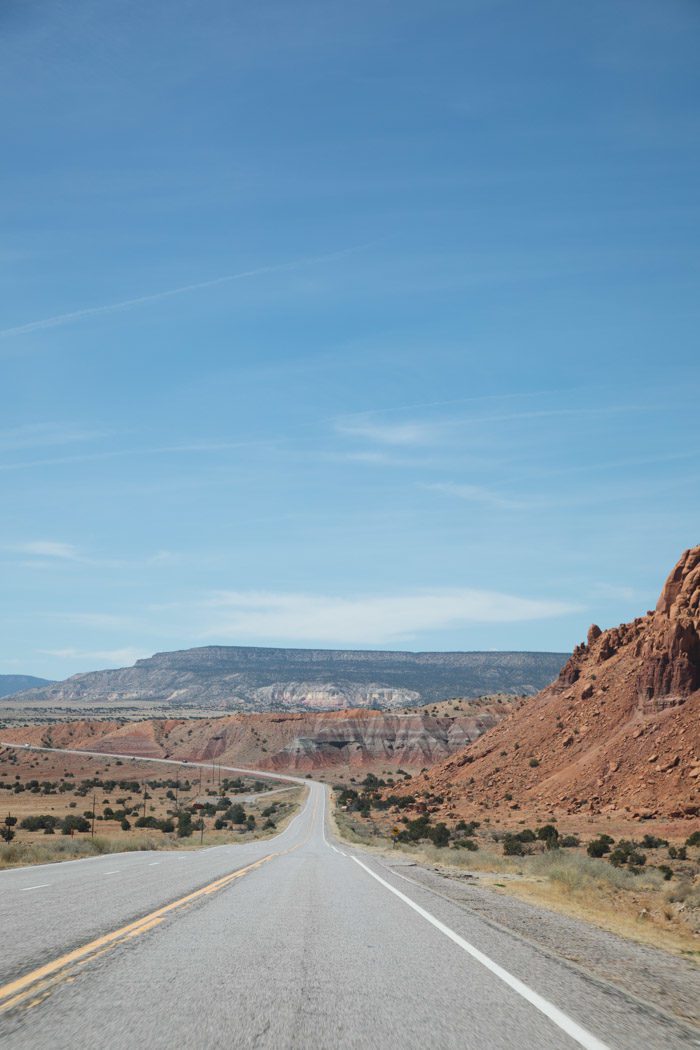
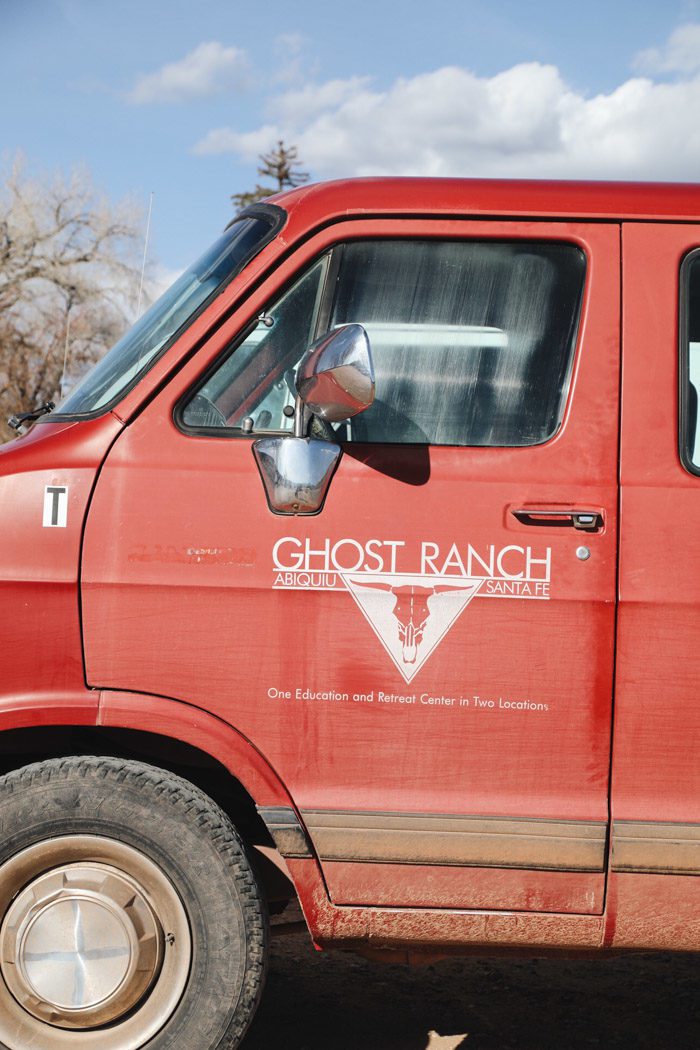
The description of Ghost Ranch describes a history that “reads like a novel”:
Dinosaurs once walked the soggy wetlands that became the arid high desert of Ghost Ranch. Millions of years later Navajos and various other tribes roamed the valley. The Spaniards settled here and then came the cattle rustlers, the wranglers and the dudes. Arthur Pack, one of the country’s first environmentalists, bought the Ranch and sold a little piece of it to Georgia O’Keeffe. Scientists took respite time here from the stresses of building the nuclear bomb at Los Alamos. Famous guests have included Charles Lindbergh, Ansel Adams and John Wayne. Arthur Pack and his wife Phoebe gave the Ranch to the Presbyterian Church in 1955 and even though Georgia O’Keeffe wanted the Ranch for herself she eventually became friends of the first director of Ghost Ranch, Jim Hall.
O’Keefe is certainly the area’s most famous resident, and many come to see the landscapes which inspired so many of her paintings. She eventually made herself a permanent home in the nearby village of Abiquiú, and you can make reservations for home/studio tours, as well as for tours focusing on her relationship with Ghost Ranch.
But in addition to remembering the artist, the ranch also offers something like 200 classes each year—from Adobe Building and Paleontology to Plein-Air Painting and Yoga—and visitors can come for all kinds of outdoor adventures, like hiking, horseback-riding, or kayaking.
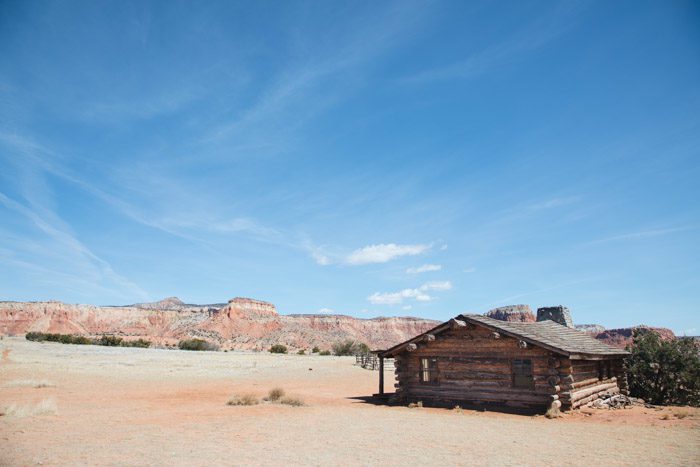
There have also been many movies filmed here, and there are tours focused specifically on visiting featured locations. Passing by the cabin from City Slickers made me want to re-watch it, and it was a little upsetting to realize that—in the movie, where he’s having a mid-life crisis—Billy Crystal is supposed to be my age! (His character even shares the same birth date as me.)
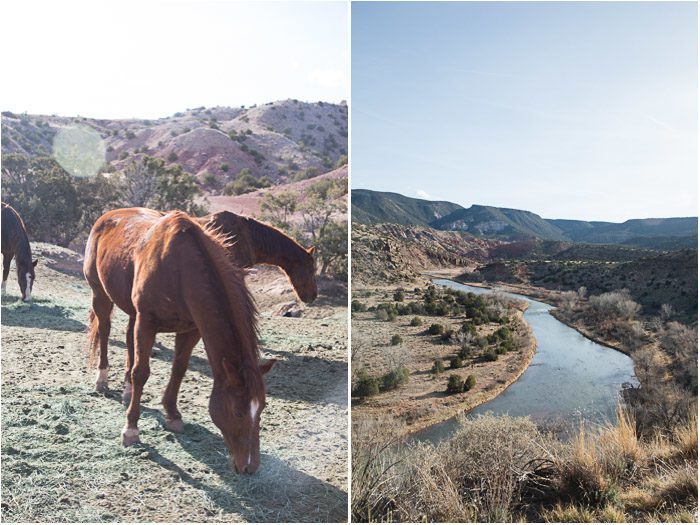
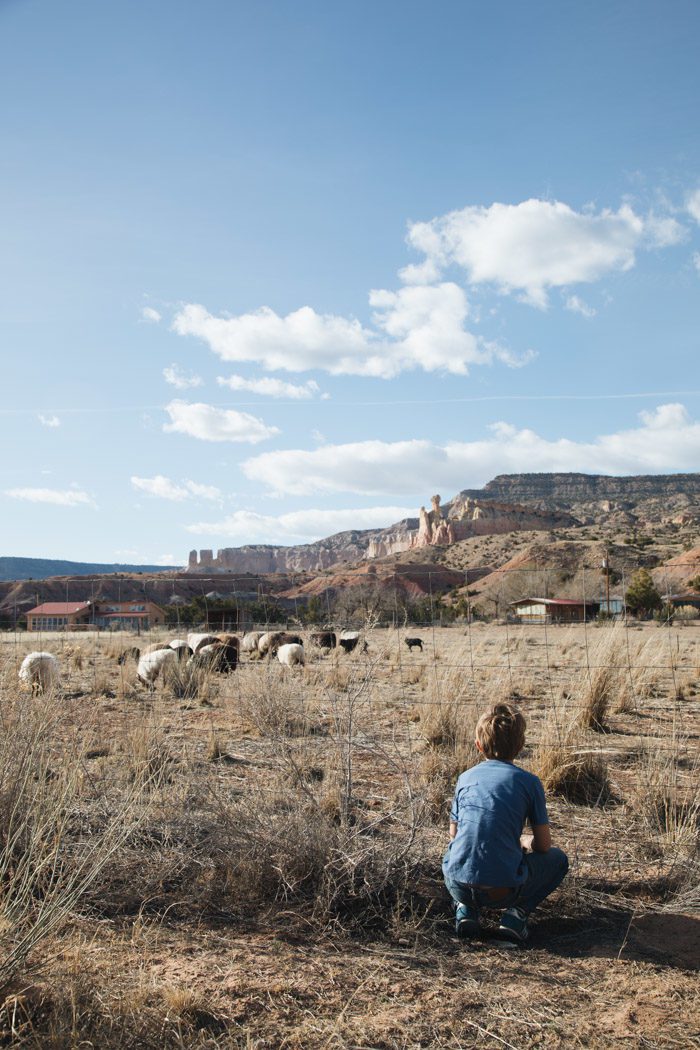
No matter the focus of one’s trip, it’s a gorgeous swath of southwestern landscape to breathe in and enjoy.

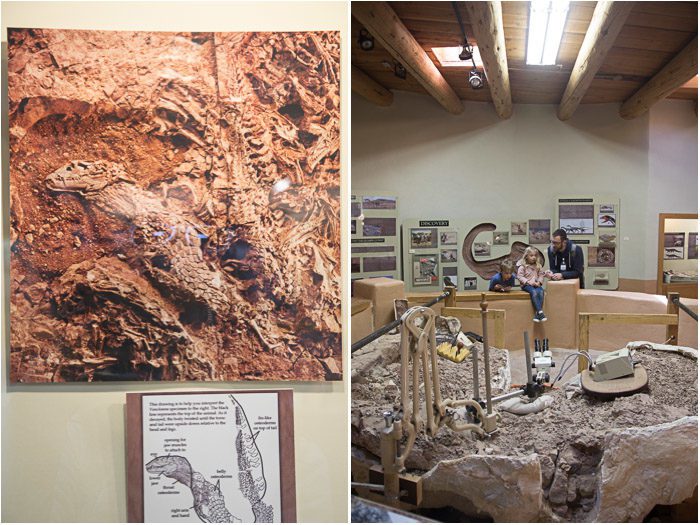
We stopped into the welcome center before checking out the two small museums on site. The Ruth Hall Museum of Paleontology displays the fossils of the Coelophysis, a dinosaur discovered at Ghost Ranch in 1947, and some ongoing work from a more recent dig.
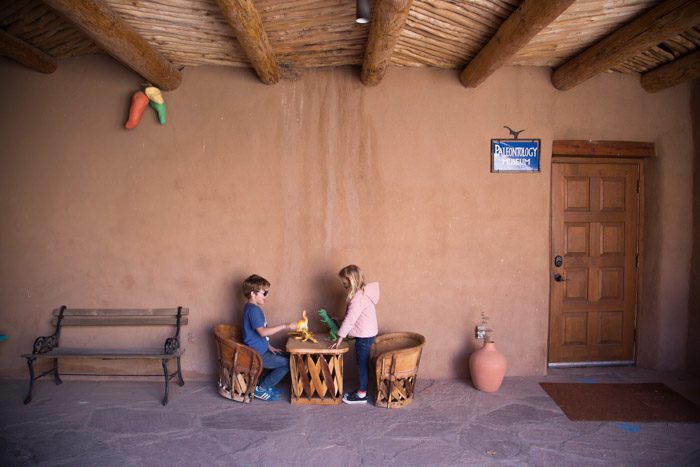
There’s also a small museum of Anthropology, with some Native American tools, pottery, and ancient artifacts—from 10,000 years ago to present time pottery and weavings from local Pueblos—that help one to have a better appreciation for how long the area has been inhabited.
We started here, and then set out on the Chimney Rock hike.

You can see the location of the trailhead to Chimney Rock at number 1 on the map, just behind the museums, which we chose from the nine listed area hikes.
We’d read that the popular trail climbs from 6,500 to 7,100 feet over 1-1/2 miles (one-way), but we were still surprised when we looked up at the mesa and realized we were heading all the way up to the top. Really? No way…
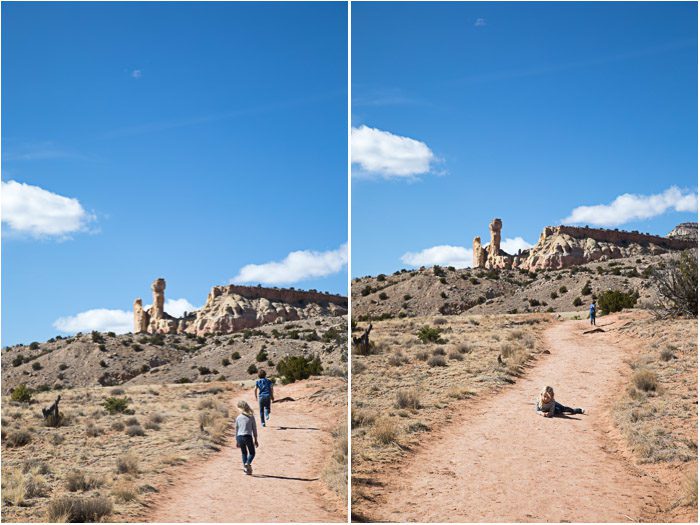
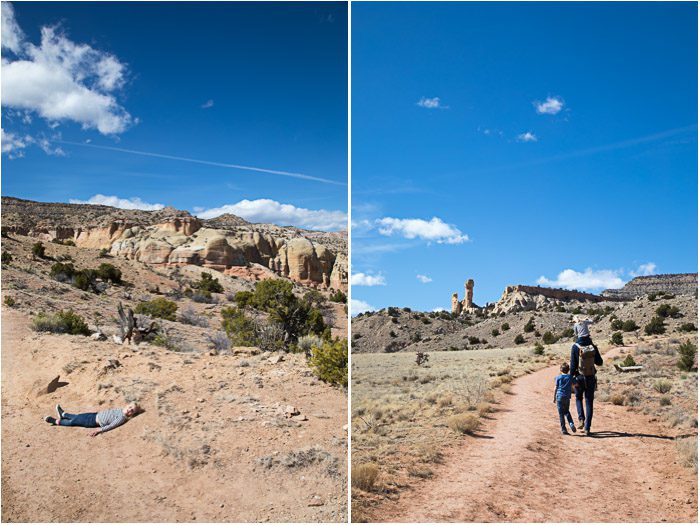
Especially when hiking with Skyler, just a few hundred feet in, looked like this.
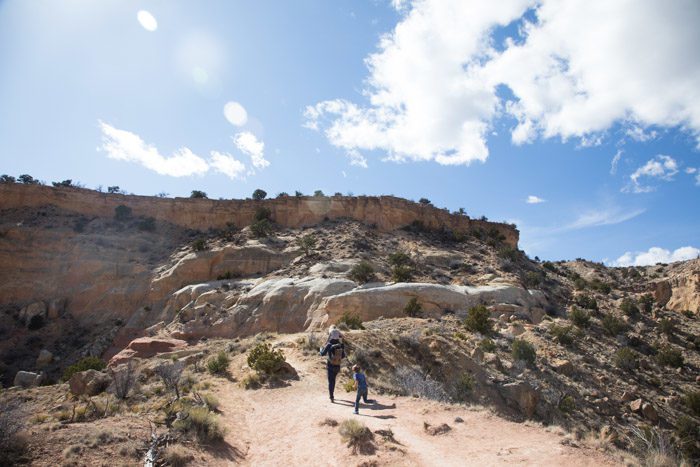
Oh, man. Thank goodness for Aron, sherpa-extraordinaire. (We were really sorry we’d forgotten to bring a pack-carrier on this trip.)
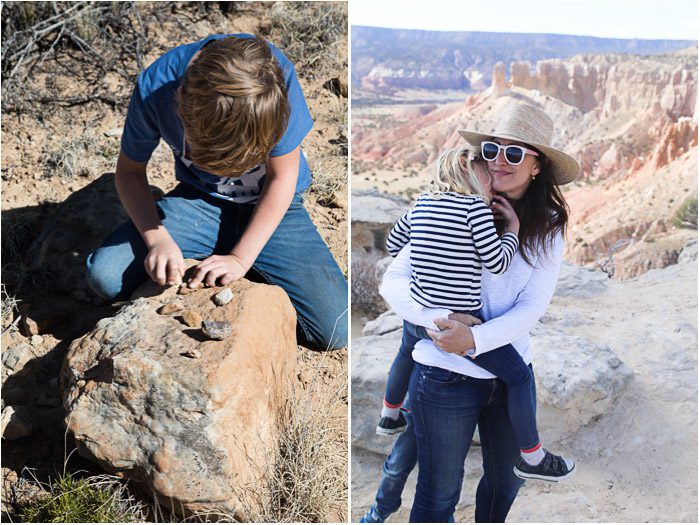
Instead of looking for obsidian, Hudson’s focus this time was on shaping an arrowhead out of the somewhat soft stone. He worked on it for most of the hike.
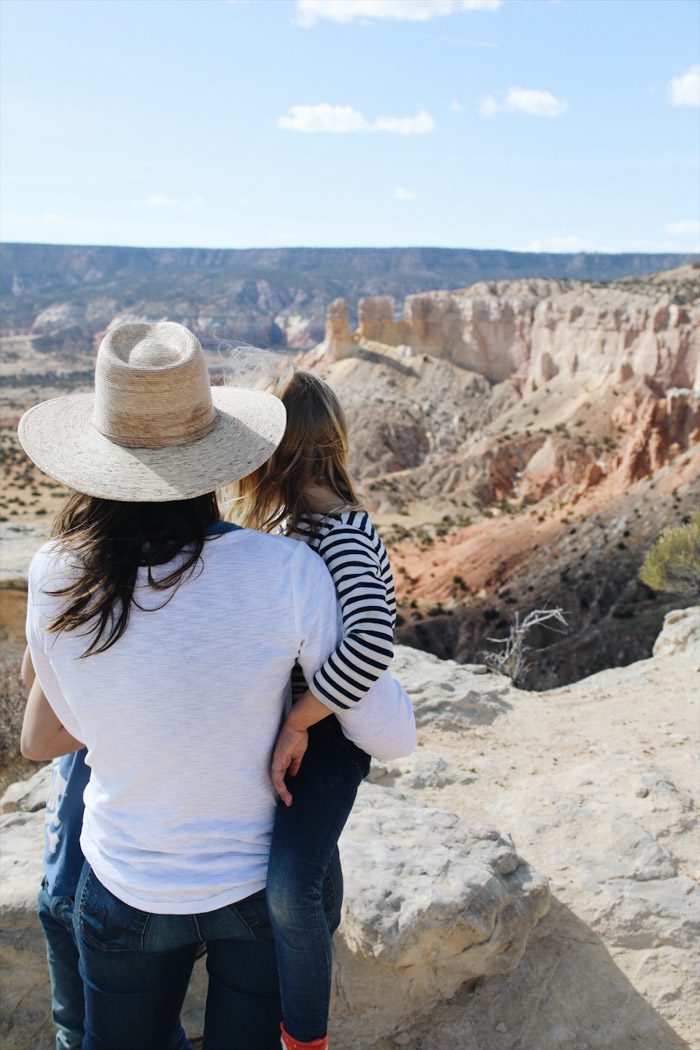
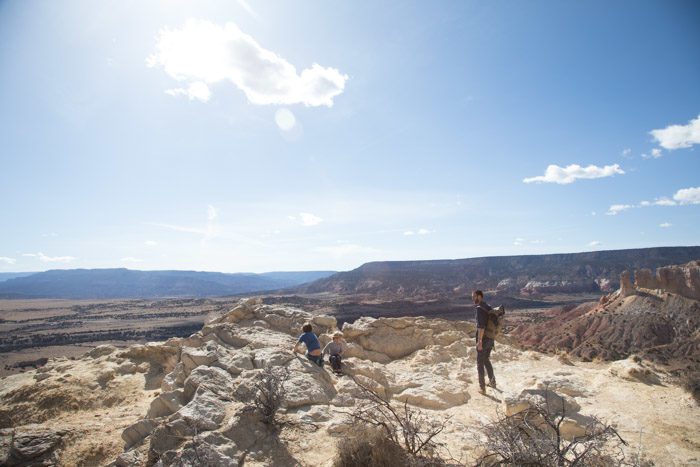
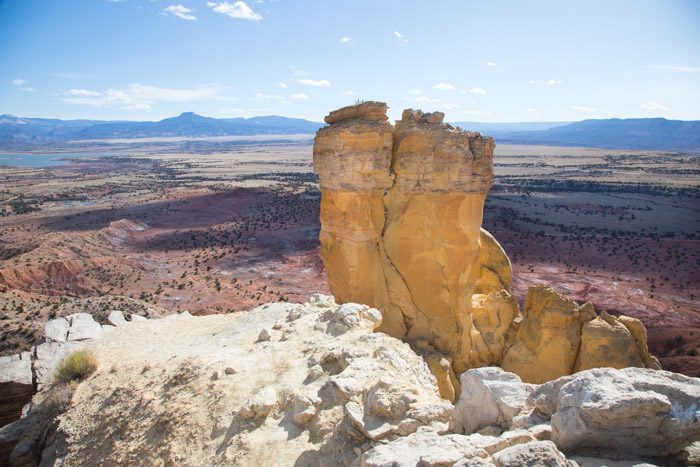
Eventually we made it up and—wow—the colors across the valley were incredible!
The wind was incredible, too, and it was a little scary at the top with the two kids, I confess. I think Aron is making the kids promise to stay seated in the photo, above. And I’m behind the camera, at any moment prepared to yell “don’t move.”
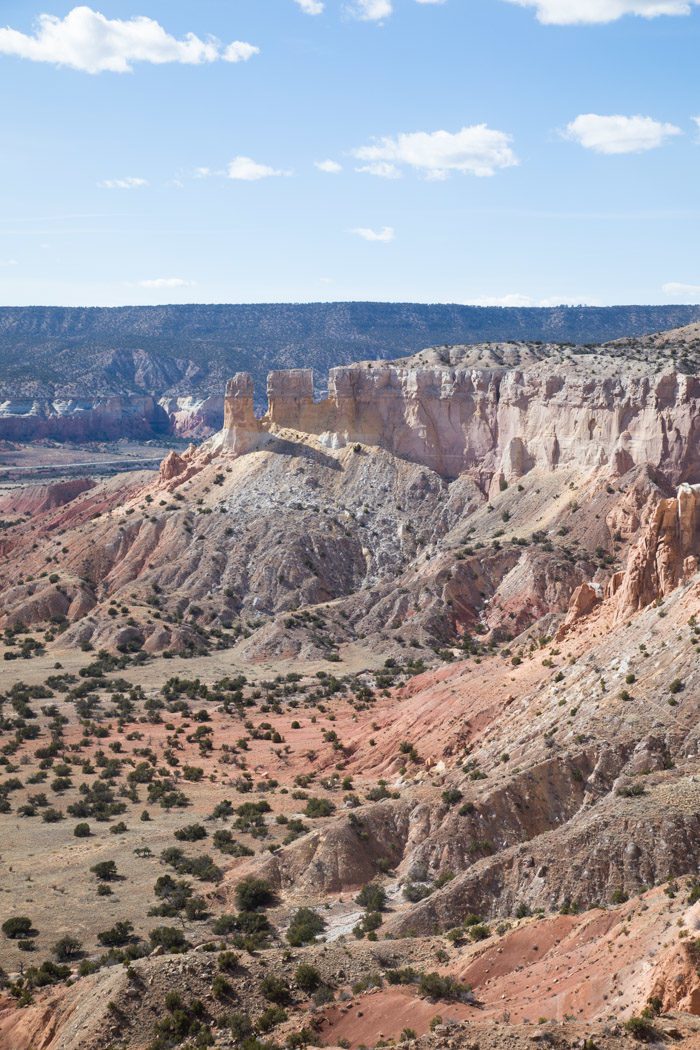



But we were happy we’d made it up.
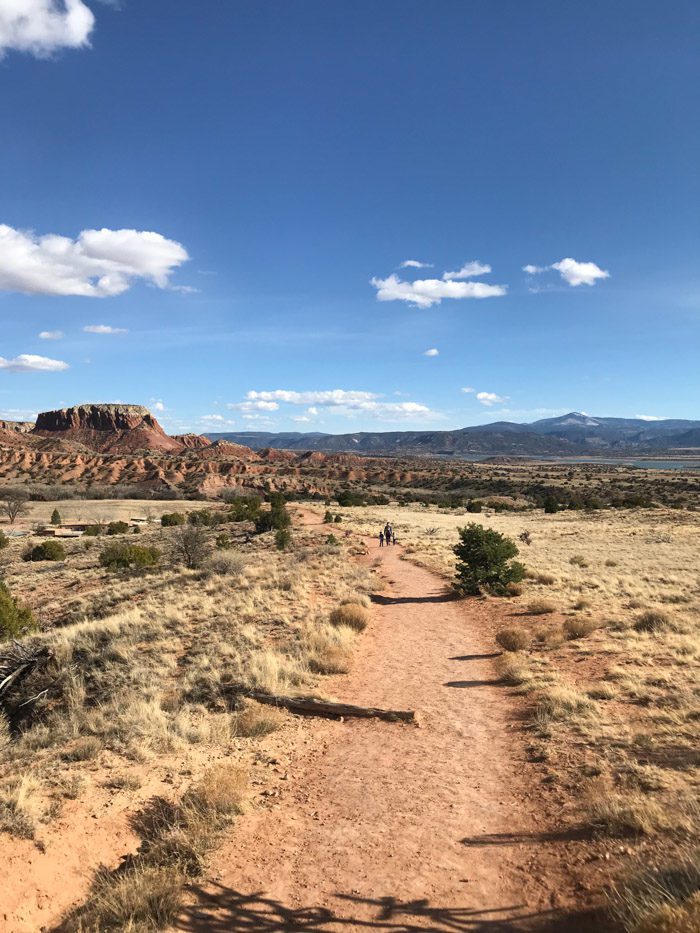
And, crucially, down.
Safe and sound.
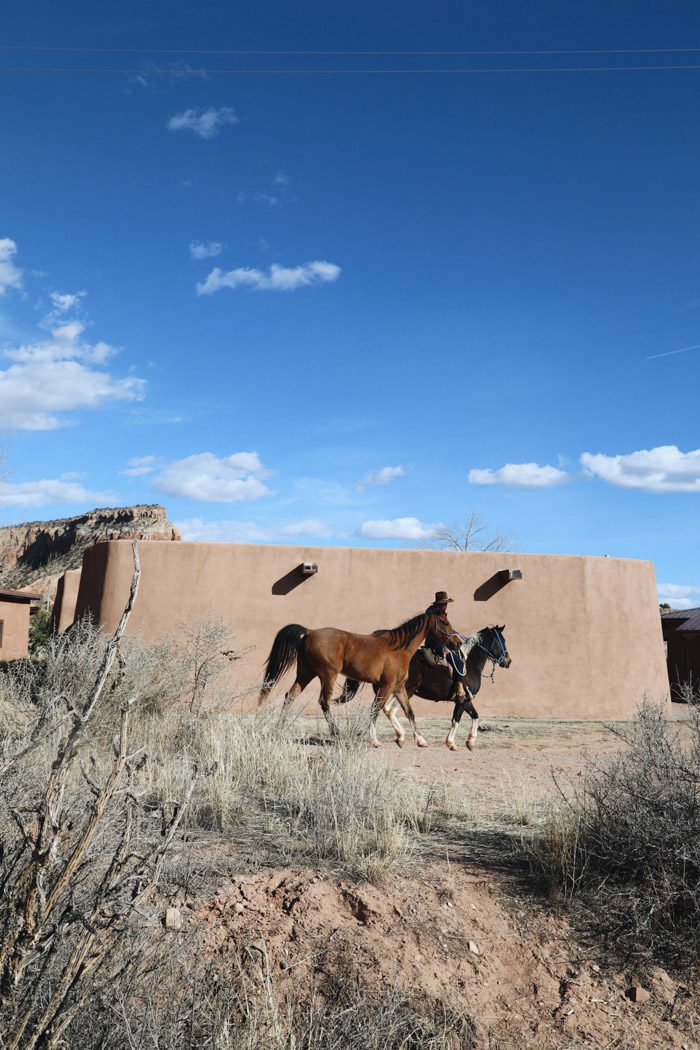
With more time, it would be wonderful to go on a horseback ride at the ranch. They have buckaroo rides for kids, and this sunset trail ride would be incredible!

Afterall, the place was already glowing by mid-afternoon, so I can only imagine how beautiful it would be at sunset.
Have you been to either of these destinations? Any advice to add? I know we just scratched the surface.
P.S. Previous New Mexico travelogues:
Carlsbad, White Sands, Bandelier & Jemez Springs
and lots of Reader Suggestions


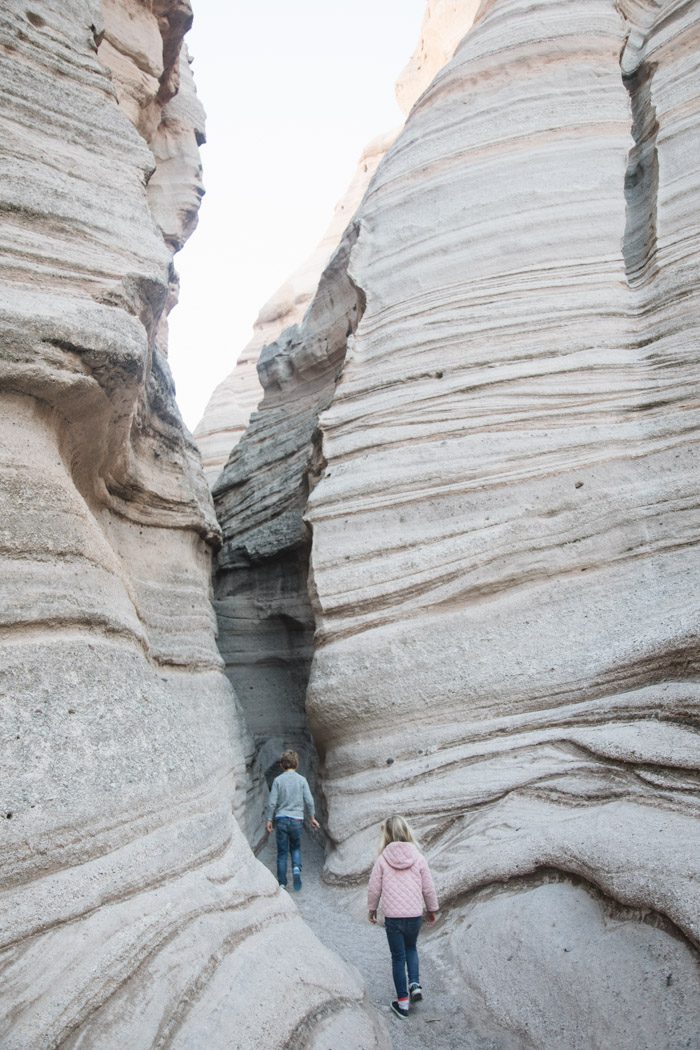
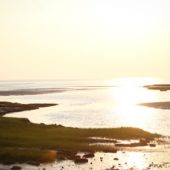
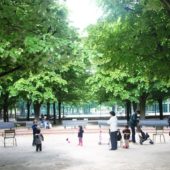

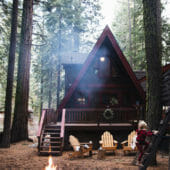



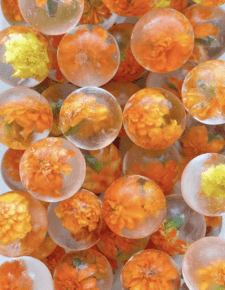


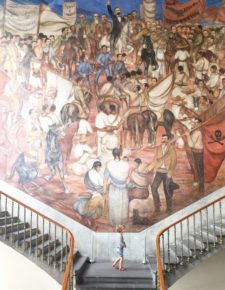





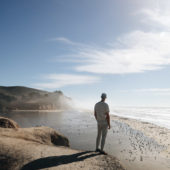




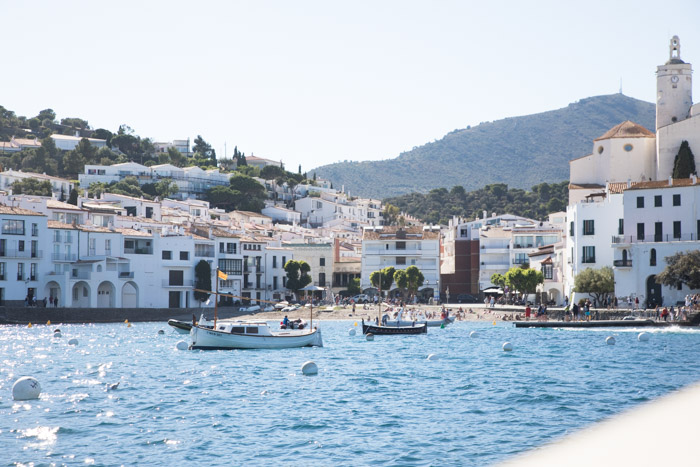
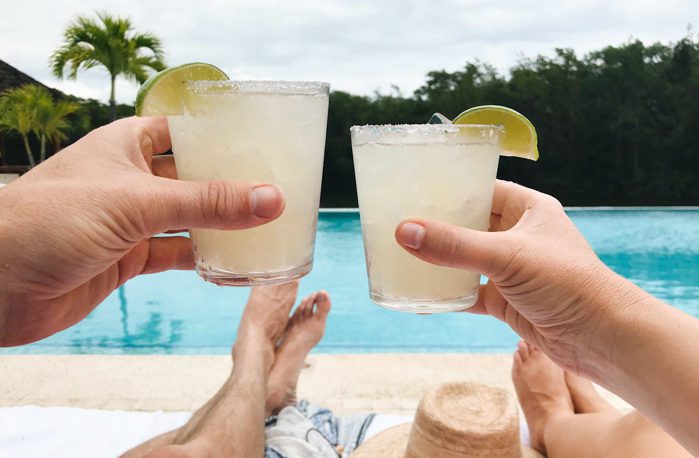

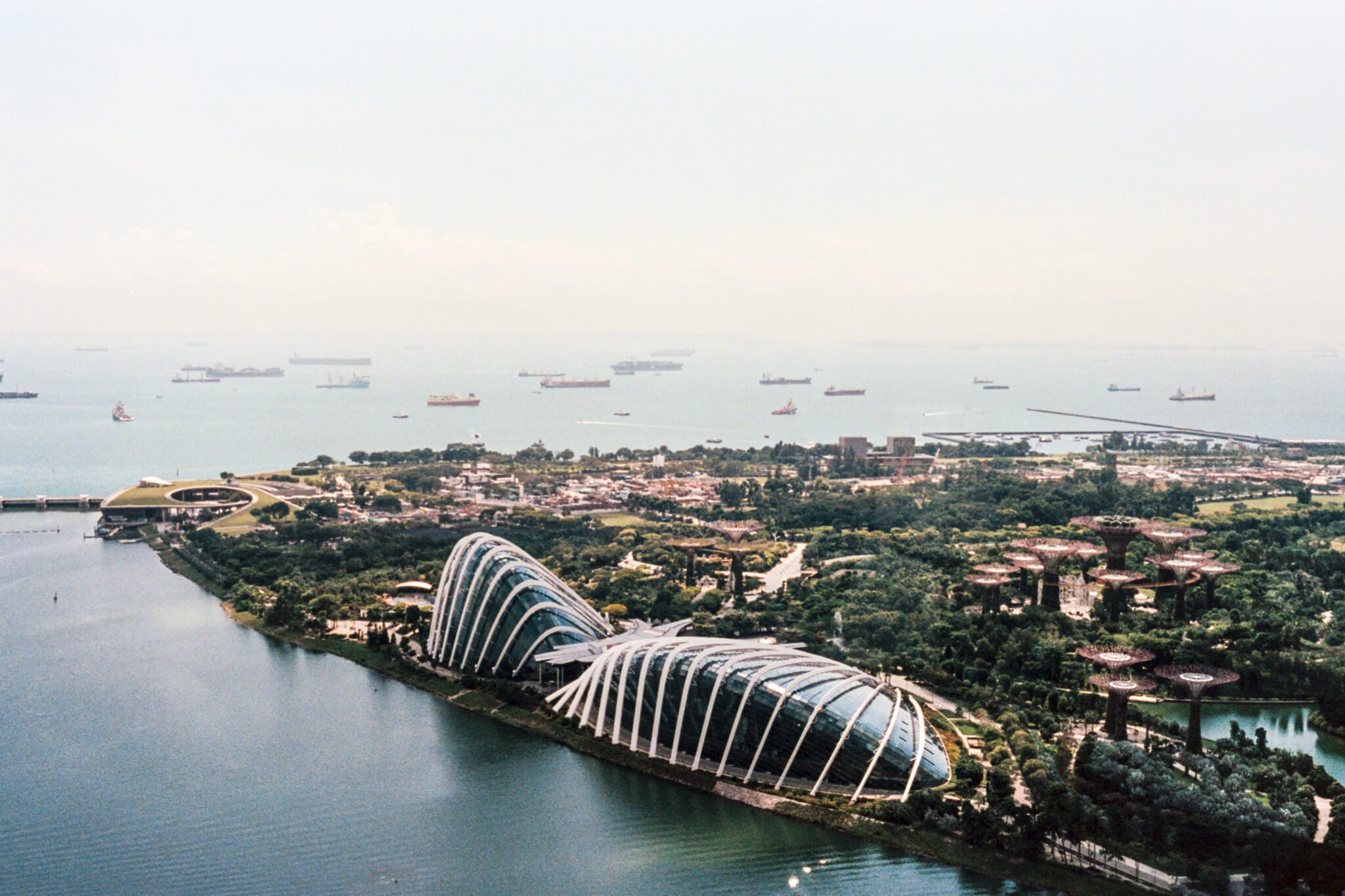
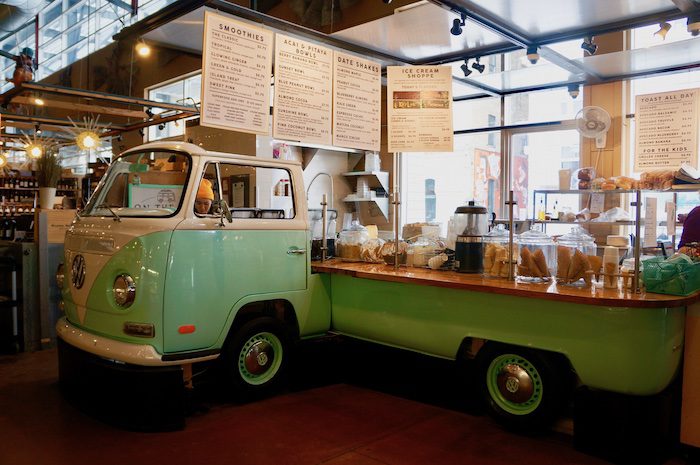
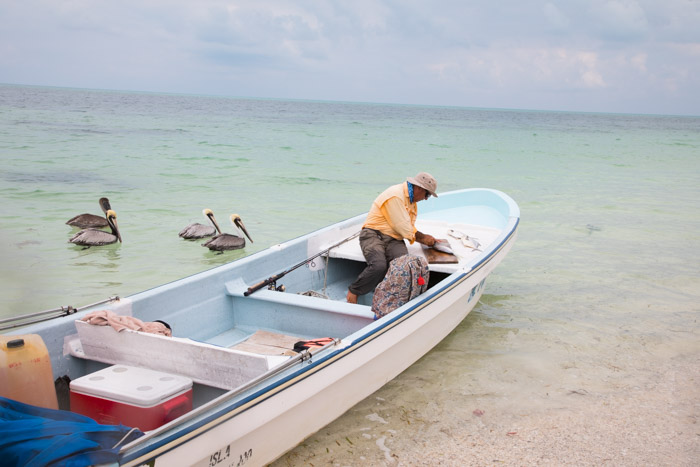
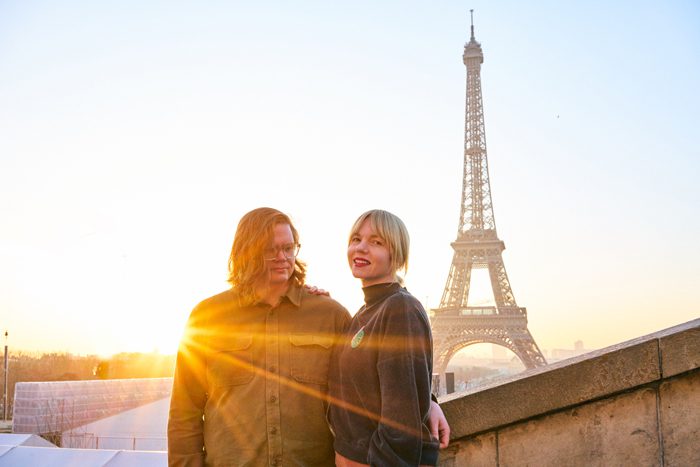
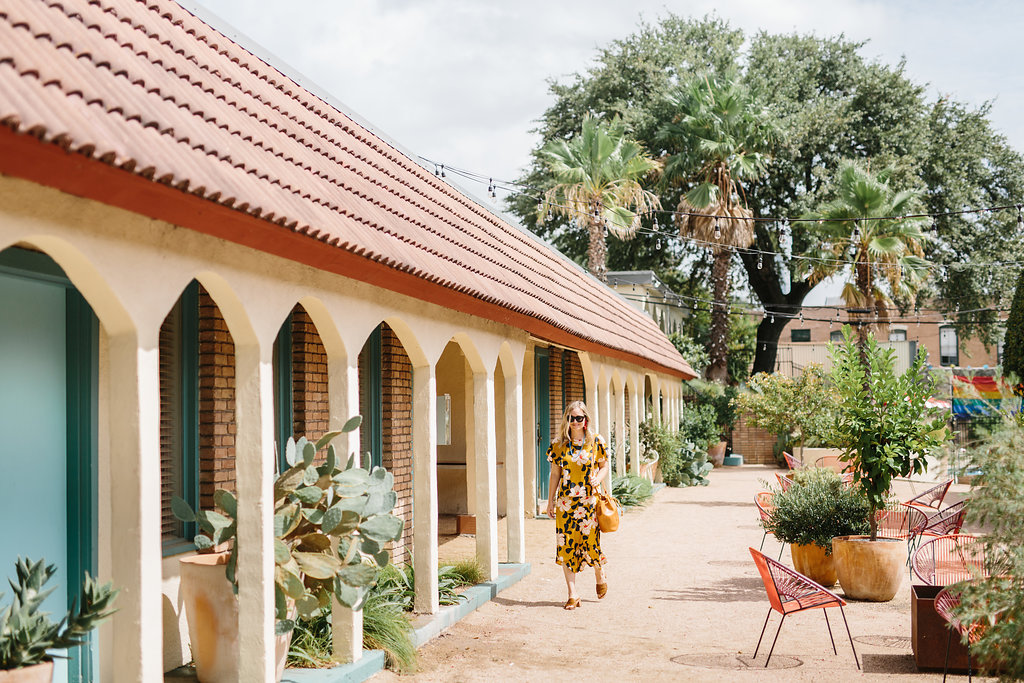



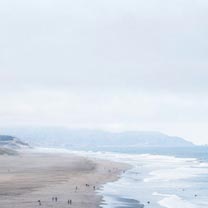


7 Comments